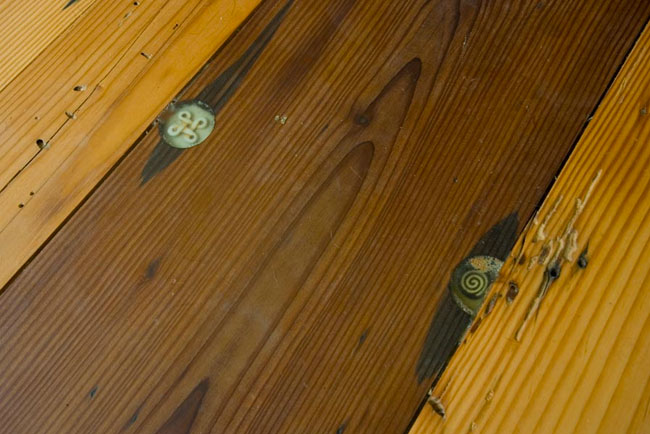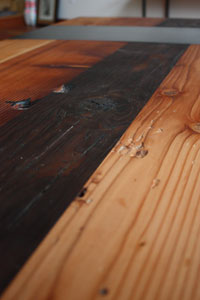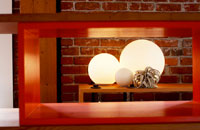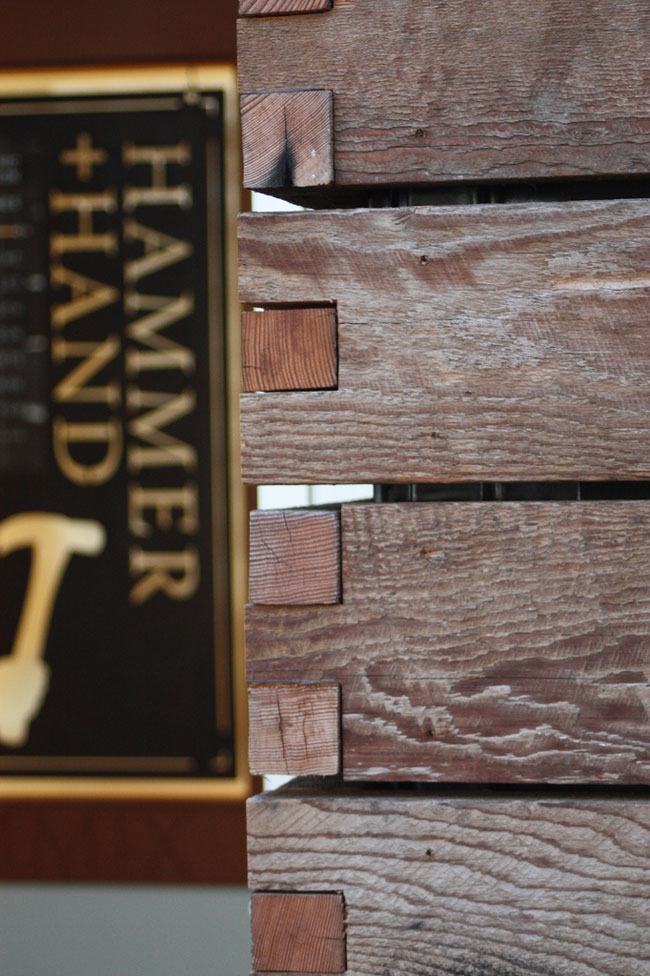Hammer & Hand’s co-founder and CEO Daniel Thomas lays out upcycling vision.
The current issue of Green Living magazine (by Oregon Home) features a story about Daniel, our upcycling work, and our Retail Studio. Please check it out here. And for the magazine’s full interview with Daniel, please read below. Enjoy!

(Green Living)How would you define upcycling?
(Daniel Thomas) Moving a commodity “up”, or preferably “out”, of the consumer waste stream. Saving it from its “end of life-cycle” burial.
(GL) How long have you been upcycling? What got you into it?
(DT) Since I started wearing cast-off clothing from the Goodwill in high school? Most recently, Hammer & Hand has, over the last 16 years, pulled apart buildings in the Northwest, and we have always tried to find a home for every part we could. Re-using framing lumber, siding, doors, windows, all the bits and pieces.
 (GL) When did you start the WRaP and STaCK line, and what inspired you to start it?
(GL) When did you start the WRaP and STaCK line, and what inspired you to start it?
(DT) A couple of years ago, we were sitting on a large stockpile of structural pieces from some deconstructed 100-year-old barns. The idea seemed natural. The wood has so much character and history.
(GL) What is the purpose/mission behind the line?
(DT) To seek out the discarded and overlooked and with thoughtful design, create objects of beauty imbued with history.
(GL) What are the benefits of upcycling (environmental, creates worth out of discarded items, etc.)?
(DT) It inserts itself into the myth of the consumer culture and seeks to have us rethink the idea that objects have a linear progression from extraction of raw material to production to use to final burial in landfill. The way to escape from this is to design and define our relationship with the environment as circular. Upcycling is a reminder that we can “cycle” energy: we can recapture and utilize the energy in objects, put them back on the to p of the wheel.
p of the wheel.
(GL)Why do you think it’s important for eco-conscious Oregonians to incorporate upcycled items into their home décor?
(DT) First off, because it is beautiful stuff, and that alone makes for a happier place to live. Regardless of the “green narrative”, these are pieces of precise craftsmanship and fabulous design. The story is an additive element. Further, I believe strongly that the places we inhabit and the objects that surround us hold the energy of the stories and history that has passed through them. It’s not simply the carbon and embodied energy measured by kilowatts, it’s the energy of the human hands that made and created the objects, the lives that were lived, and the spirit of the people and events that surrounded. This recalls the classic quote from John Ruskin that we have held as a central part of our mission at Hammer & Hand:
When we build, let us think that we build forever. Let it not be for present delight nor for present use alone. Let it be such work as our descendants will thank us for; and let us think, as we lay stone on stone, that a time is to come when those stones will be held‚Ä® sacred because our hands have touched them, and that men will say, as they look up on the labor and wrought substance of them, “See! This our father did for us.”
—John Ruskin
(GL) Do you think incorporating items with a history in the home has a positive effect on people? Why or why not?
(DT) The positive effect comes from the power of the story, the connection that grows with us and the object, our willingness to put worth and value on its creation and hold it. The tree and the carpenter, the stone and the mason, are valuable and are not merely convenient pathways to larger profits and short-term gains. It’s hard to place any importance on a laminated bit of particle board that was created in some unknown factory along with millions of others, under unknown conditions for the workers, a piece of particle board that is meant to only last a few years so that you will buy another and another from the same company.
 (GL) How has upcycling changed the way you view garbage?
(GL) How has upcycling changed the way you view garbage?
(DT) “Garbage” is a myth. It’s the buried history of our untenable relationship to the resources of the planet. When we create objects that are meant to fall apart and become useless “garbage” we forget what a small place we inhabit.
(GL) Do you think upcycling could potentially change the way our state views garbage?
(DT) I doubt that. Cynically, this is some benches and bookcases. Our state and our culture need a massive shift in consciousness. My money is on upcycling as a natural part of the post-apocalyptic survival strategy of the few remaining humans. (This is said MOSTLY in jest.)
(GL) What’s your favorite piece you’ve created? Is there a history behind the piece?
(DT) I really love the shelving made from pieces of railroad beds and truss hardware and reclaimed bleacher seats from Lewis & Clark College. It’s called BARcode, and it’s made of all found objects. I carried the rusty support platens across the rainy field, staining shirt and pants in the process. The design that bright designlab came up with using this pile of bits and pieces has fantastic rhythm.
(GL) How do you extend upcycling to your remodel and new construction work?
(DT) We pull wood out of one house and try to find a home for it. The siding from the garage we are taking down may become the wainscoting in the attic bathroom we are building across town. You have to be fleet of foot to take this kind of advantage, and be working with designers, architects, and clients that are willing to move with what becomes available. The best way to reuse this reclaimed material is to move it directly from one house to another. Once we start handling the material: off-loading it, creating and maintaining clean and dry storage, it becomes economically out of reach for many budgets. We have to remain “sustainable” to the pocket book as well as the planet.
 Back to Field Notes
Back to Field Notes